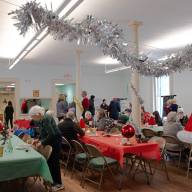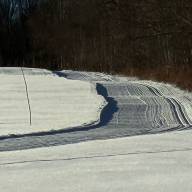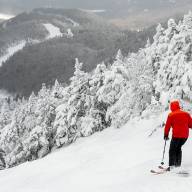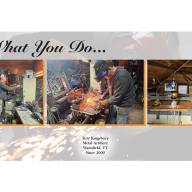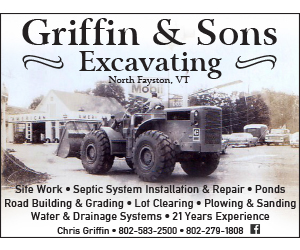Not surprising it did not take the Hosfords long to settle into Valley life. Charlie secured his first office upstairs at the East Warren Community Market and later partnered with Yale-trained architect, Barry Simpson. They formed Environmental Dynamics Design and operated out of Charlie’s house before relocating to the Odd Fellows Hall in Warren.
Together they built the Warren Airport building, and timber frame houses in and out of the area. Barry acquired the Bobbin Mill property and there they created the Dirt Road Company and the Comfort Shade Company and, with 30 employees, built homes, children’s furniture and toys, Additionally, they did the wood working and sail boat kits for Mad River Canoe.
He and Carol welcomed their son David and later their daughter Kate. Carol opened a successful nursery school in their home and accommodated many children including those of the founders and developers of Sugarbush. The nursery school morphed into Spring Hill School. In 1971, along with four other families, they bought property on Rolston Road for $15,000, creating a co-op housing agreement that included a pond, barn, tree house and five floors of homes that, at one point, housed 13 children. The Hosfords remain there today and love the atmosphere and space it provides for hosting friends and family.
Carol initially taught, then became principal at Waitsfield Elementary, a career lasting 30 years. It enabled the family more stability and Charlie an avenue to become involved with school needs not covered in the budget. Charlie embraced a “just say yes” attitude that ensured a happy marriage and many enhancements to the school. Included in his resume is the fact that he and Carol once slept outside the school to guard the tent containing all the merchandise for the first Ski and Skate sale. He also organized extracurricular activities benefiting not only his children, but also all kids in the community.
The Hosfords started the MRV Youth Soccer program on their property and used magic markers to create T-shirts for the team. It was the first community-wide recreational effort for boys and girls. It led to the Youth Ice Hockey Rink built at Brooks Field, the precursor of the Harwood hockey team. The Skatium was created due to Charlie and Don Swain skating together and recruiting like-minded others in the community to make it happen.
VOLUNTEER ROLES
As his children grew, needs at Carol’s school led to new volunteer roles. Land for a school garden was obtained through a land swap with the town and the Wait House. It seems that the properties in that area, reminiscent of what he admired in Finland, knew no borders.
In 1985, the era of detente with the U.S. and Russia found Charlie, Kathy Cadwell and David Kelly wanting to get into citizen diplomacy to help ease the tensions of the Cold War. They believed that teenagers would be the best ambassadors. A Harwood Union High School chorus with boys and girls was selected as the vehicle. Charlie and Dave went to the U.N. and then to Moscow and talked their way into the Pioneer Palace in Leningrad that housed Russian students to age 18. The Russians agreed to receive the Harwood group. This led to Russian students coming to The Valley and staying with local host homes willing to take two students and an adult chaperone.
Named Project Harmony, it proved to be a monumental occurrence that led to the opening of flood gates of international exchange programs. Vermont was facilitating all the exchanges and was operating out of the Hosford basement. American students would go on to pursue Russian in college and some of the first students were later employed at Project Harmony. PH (Project Harmony) International, now headquartered on Main Street in Waitsfield, has offices in Ukraine, Georgia and Armenia and is now in its 40th year. Charlie continues to serve on the board as does Kathy Cadwell.
With joining the Waitsfield Select Board, involvement opportunities abounded. He served for three decades on the board, frequently involved, hands-on, in town projects.
Those projects included playing a large role in restoring the covered bridge, developing the water system, and the acquisition of the historic Wait House which required endless repairs.
After his professional retirement some 20 years ago, he invoked his mantra to do as much as he can, with as many as he can, for as long as he can – and then he set out to do just that.
BRICK WALK
Charlie found he liked projects that benefited his town. The brick fundraiser that led to the brick walk on Bridge Street reflects his labor. He loves the Joslin Library and built the pathway behind it to connect to the street, shelves in the conference room, and redid the fireplace. If called upon, he responds. Five benches built from scraps he was trained early to save, commemorate the young Valley students tragically lost in 2016. Involved with the Mad River Path, he designed and was the primary builder of the path, now nicknamed the Hosford Highway, that goes through wetlands from the Fifth Quarter to Lawsons. He is thankful to GMVS students who hauled materials. He loves challenges and tackling something he’s never done before like building a board walk. His design made certain the path was not straight but meandered.
Two huge events greatly impacting him were the collapse, due to heavy snow melt, of the Turner Barn in 2007. The barn that housed heifers was a total loss and took the lives of six heifers. Charlie, eager to see how to help the Turners rebuild, found it required over $50,000. He learned there were caring people in The Valley willing to step up and provide the money alongside all those who provided the physical labor so the Turner’s rescued heifers had a home again.
The second event, Hurricane Irene, in 2011 jeopardized much of the area he loved. He took on the Bridge Street piece with other volunteers hauling river rock and restoring the riverbank. He spent two years on the blue building and re-configured the total space into smaller units. The outpouring of volunteers and what they were able to accomplish is embedded in his mind.
MULTI-DIMENSIONAL PROJECTS
Charlie stated that all projects always have multi dimensions. He finds it fun and a fulfilling way of socializing and getting to know people he might not have met. It is very satisfying figuring out a way to understand a need and ways to meet the needs, be it at Hannah’s House, Knoll Farm, which he calls his personal retreat, or a Rotary project. He responded to a chamber request and designed and built six shelters for portable toilets. He was happy to help with the MRV Dog Park endeavors. Aspects of the physical work do not get easier. He and his good friend Vince Gauthier collaborate on many things including building of access ramps for the handicapped and the trimming of trees in downtown Waitsfield and would welcome younger people getting involved. Now, Charlie likes projects that are three feet or higher from the ground!
He feels blessed with Carol, his wife of 62 years, his children, their spouses and five grandchildren. Grateful also for the luxury of free time, his good health, food security, and good medical insurance, he hopes he can continue to serve. He always wants to have a good answer when asked what is he doing. Volunteerism is in his blood!
Knowing that there is great need, he dreams of being able to build houses of refuge similar to the tiny house built on Route 100. When drifting off to sleep, he tries to figure out how to build and reuse “found” materials. Clearly, the influences from his upbringing, his childhood, his education and from Carol surface constantly.
How fortunate and indebted the MRV is for all the detours in Charlie’s life helping others and his community. It is widely believed there is no one with a bigger, more caring, kind, and generous heart than Charlie Hosford and that all his efforts have created a major, indelible, and inspiring imprint on our community.
You might also like






